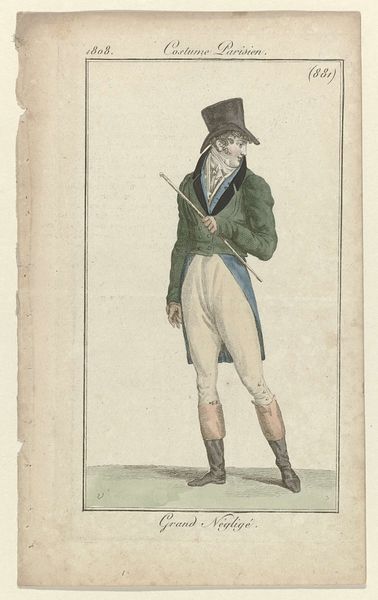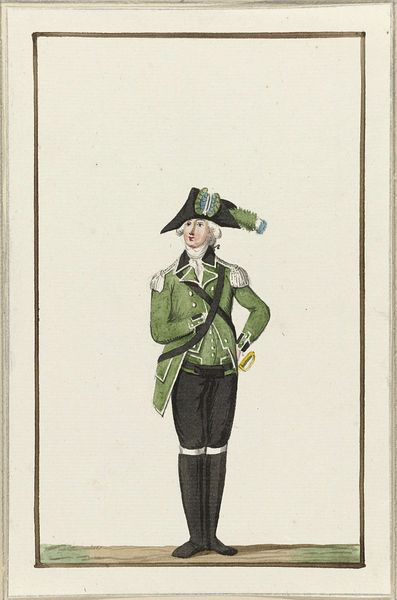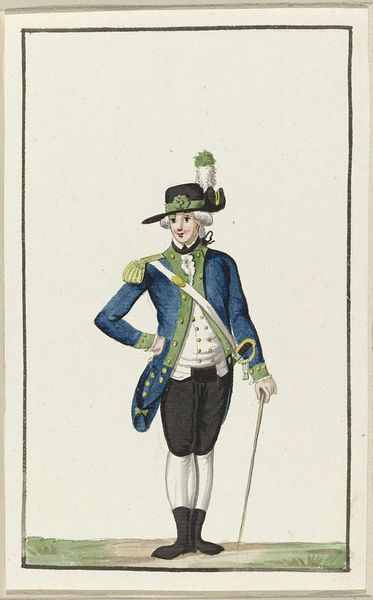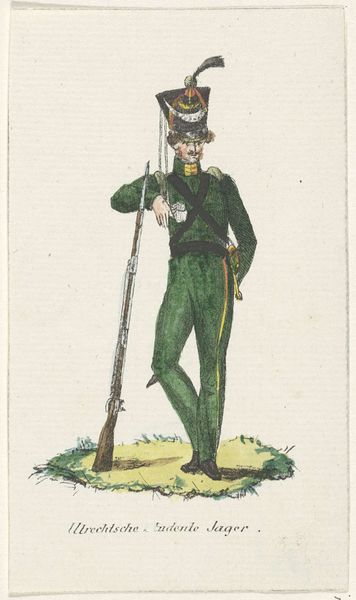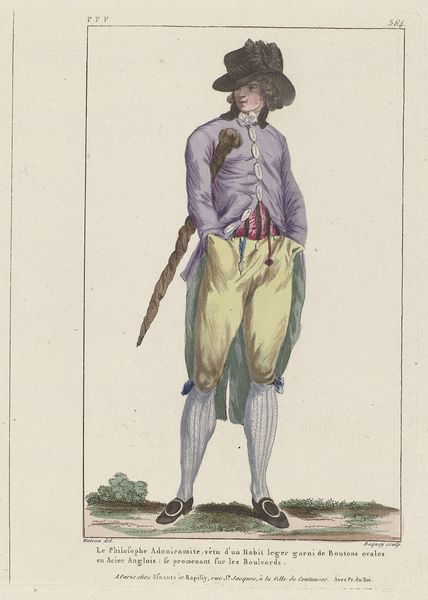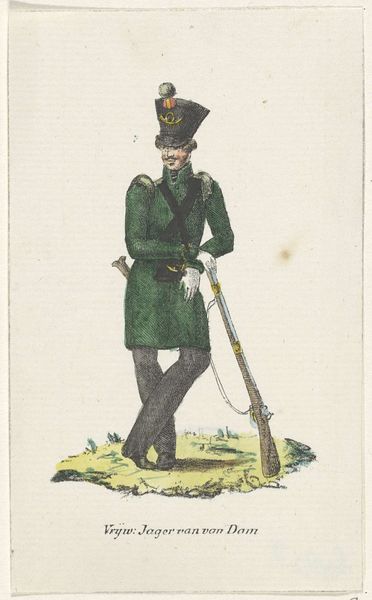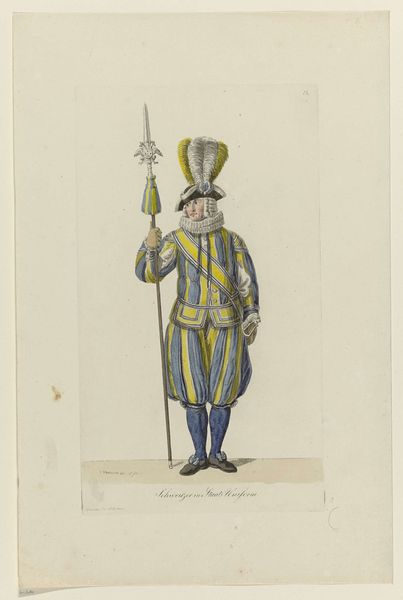
drawing, watercolor, pencil
#
portrait
#
drawing
#
figuration
#
watercolor
#
pencil
#
watercolour illustration
#
history-painting
#
academic-art
#
cartoon carciture
Dimensions: height 146 mm, width 190 mm
Copyright: Rijks Museum: Open Domain
Curator: Ah, look at this figure. "Jager," it's titled, dating back to 1785. A delicate watercolor and pencil drawing currently residing here at the Rijksmuseum. Editor: It’s intriguing, isn't it? There’s an almost cartoonish quality to him, despite the stiff military attire. He seems plucked from a play. I’m wondering about power here. How it's symbolized, or perhaps subtly undermined. Curator: Undermined, maybe by that plume practically tickling his nose? He's very earnest in his stance, all rigid posture and shiny sword. But that almost sickly green uniform makes him seem like he's trying too hard. This drawing presents a fascinating tension. You almost pity the fellow. Editor: And that uniform! Green, a colour often linked to envy and decay. What statement is being made here by someone representing the authority of military power? Power and envy become dangerously entangled... Were Jagers perhaps considered "lesser" officers? What were the historical and socio-economic implications of becoming an officer at this point? Curator: I like your take on the envy. He’s probably sweating bullets trying to make a good impression. I do find it curious, the way he's drawn on a sort of stage, isolated on this patch of ground, all of it highlighted by watercolour, the empty space behind him makes it all look quite bleak somehow. It invites you to meditate on the performance aspect of military rank, a little theatre. Editor: Bleak, indeed. It also begs us to consider the environmental impact of warfare, if we want to extend it even further into a broader discussion. We see just a few sprigs of grass where this "Jager Officer" stands. But at the same time this artistic representation becomes highly specific in terms of costuming. Consider, what can we deduce about the history of military fashion of the period? What about the relationship between aesthetic representation and political power at this time? Curator: That's a nice reach! It feels fitting, though. There’s a lot of implicit critique baked in for something seemingly so innocuous. It’s far more subversive than it seems at first glance. Editor: Exactly. Thank you, so much, for seeing that point. It challenges viewers to look beyond the surface of traditional representation, towards deeper layers of historical commentary and social critique.
Comments
No comments
Be the first to comment and join the conversation on the ultimate creative platform.



